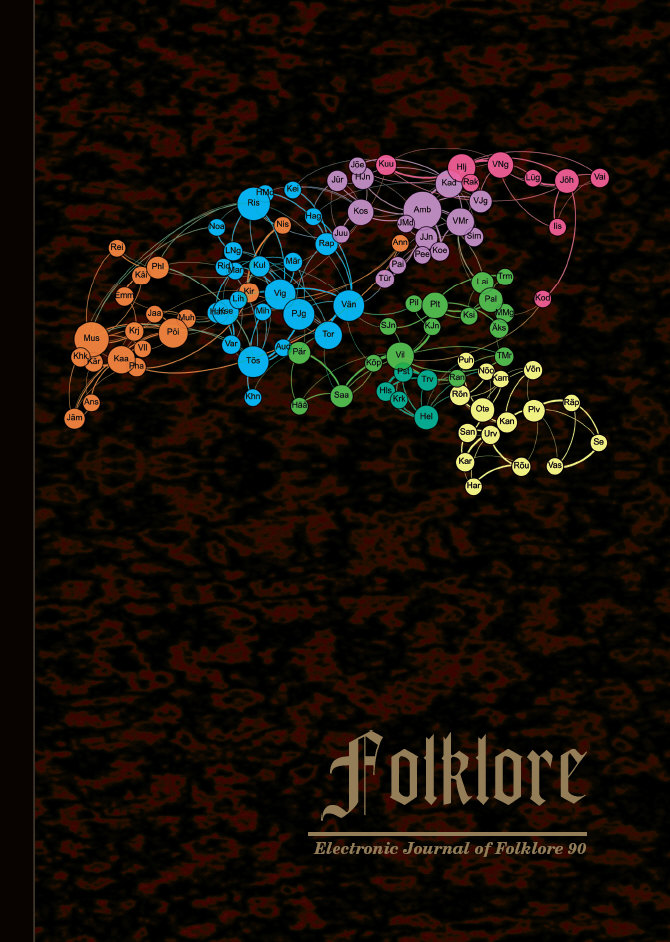Author(s): Mari Laaniste / Language(s): Estonian
Issue: 1/2024
The article discusses Priit Pärn’s book “Tagurpidi” (first edition: Tallinn: Kunst, 1980; a possible translation of the title would be “Topsy-turvy”), a popular work of Estonian children’s literature in which the verbal component is playfully intertwined with multi-layered and exciting visuals by making use of the medium-specific toolkit of comics. “Tagurpidi” has been translated into Finnish, Swedish, Danish and Norwegian (all published in 1989) as well as Spanish (2017). While the book has been available as a reissue in Estonia since 2005, and has prompted quite a bit of nostalgia-tinged discourse from its now-grown-up readers over the years, the article is the first attempt of academic analysis specifically dedicated to it. The initial subchapter gives an overview of how the book came to be, considering its original historical and sociopolitical context. Particular attention is paid to “Tagurpidi’s” links to its author’s activity in the field of drawn animation: while Pärn had a number of creative outlets, there is a tendency to regard animation as the most important one. Thus the discourse surrounding “Tagurpidi” has often presented the book as a reworking of a supposedly banned animation script from the late 1970s into something that could be released in the less controlled, marginal field of children’s literature. Upon closer inspection, this understanding appears to exaggerate matters, as the rough script drafts in question were never greenlighted by the Tallinnfilm studio’s drawn animation department Joonisfilm, and thus never made it out of the studio to the Soviet State Cinema Committee in Moscow, which held the actual power of censoring or banning films. On the other hand, it is important to assert that the book does have a fairly obvious connection with one of Pärn’s animated films, namely “Harjutusi iseseisvaks eluks” (“Some Exercises in Preparation for an Independent Life”, 1980): the book and the film have some overlapping themes and design similarities. It is also important to emphasize that at the time, illustrating children’s picture books was a valid, attractive and well paid creative outlet in itself. The next subchapter discusses the contents of the book. The plot follows the main character, a little boy named Ants who dislikes conforming to common sense and practices, and tries to do the opposite at every opportunity. His concerned parents would like Ants to grow out of this phase and thus send him to visit his uncle in a fictional location named Tagurpidiantsla (approximately: Topsyturvyville), a fantasy environment where the only certainty is that conventional norms and rules do not apply. The book depicts the narrative environment in a considered, purposefully didactic, yet entertaining way, presenting the audience with a series of picture puzzles page after page, playing on the inconsistencies that emerge between the image and the textual component. The third subchapter is dedicated to the book’s illustrations, analysing the artistic choices and layers of meaning observed in particular images but also those emerging in the broader picture. There is a clear visual influence of pop art in the use of bright colours and collage, but the book also appears to have a certain psychedelic dimension. Surrealism, a phenomenon that was both highly popular yet officially still rather frowned upon in 1970s Estonia, is another strong influence. The book shows a particular fondness of Réne Magritte, with multiple references to his works, i.e. the character design of Ants’s uncle is linked to Magritte’s anonymous men in dark suits and bowler hats. Yet the overall nature of “Tagurpidi” also appears open to interpretation as a postmodernist work due to the characteristics of the narrative. The fourth subchapter of the article takes a look at the existing discourse about “Tagurpidi” in Estonia, shaped by cultural figures and literati who read the book as children, and influenced by nostalgic feelings as well as the so-called resistance discourse evident in much of the analysis of Estonia’s late-Soviet culture. The issue of whether these influences have led to a somewhat exaggerated reading of the book’s relatively faint ideological dimension emerges as a particular point to consider.
More...









